

With our usual impeccable timing, we arrived at the chateau about the time the palace closed for mid-day break; so we took a quick lunch ourselves and ventured into the back English Garden until we could get into the palace in the afternoon.
This spot has seen a succession of gardens culminating with the present around 1812 during Napoleon Bonaparte's reign but is, like Napoleon himself, a product of the 18th century. Today it contains sequoias and cypress trees planted during the Second Empire. The Garden layout begins at the Louis XV wing which its namesake built in 1739 after tearing down Francois I's earlier building. This wing now houses the Museum of Napoleon I (unfortunately closed for the afternoon during this non-tourist season).

We walked around the pond (next web page) and back into the garden to see the reason this was the favorite of kings, the spring (called Bliaud fountain). We found it (we think) in this unmarked site:
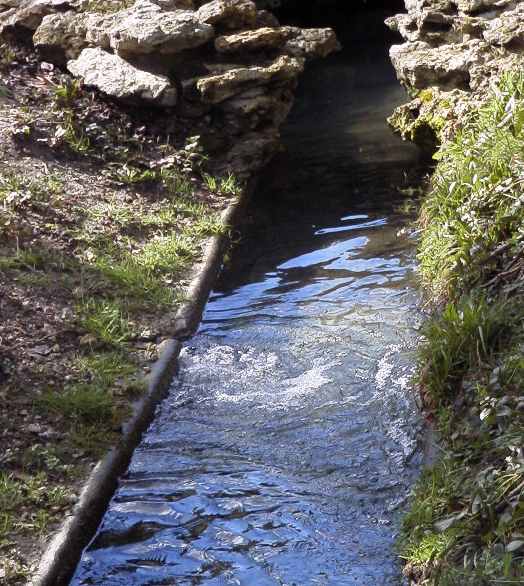
The fountain was not the king's favorite -- but they liked the game the fresh water attracted.
Here's a picture a little ways back showing some of the English-garden decoration around this spot. In the background is an obelisk marking the edge of the Forest of Fontainebleau which surrounds most of the palace:
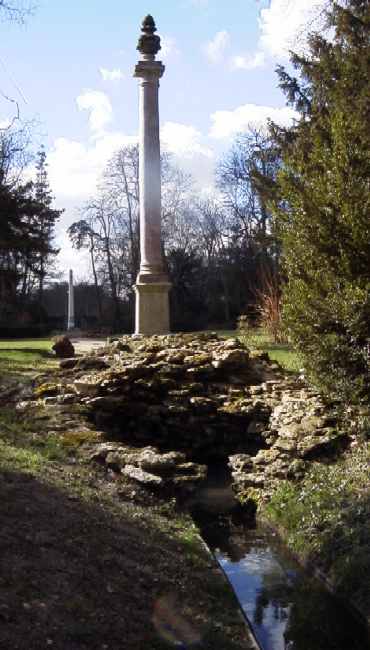
The guidebooks claim the fountain is octagonal so we may be completely off base on this. If so, the true fountain wasn't apparent. Here's another candidate for the elusive source:
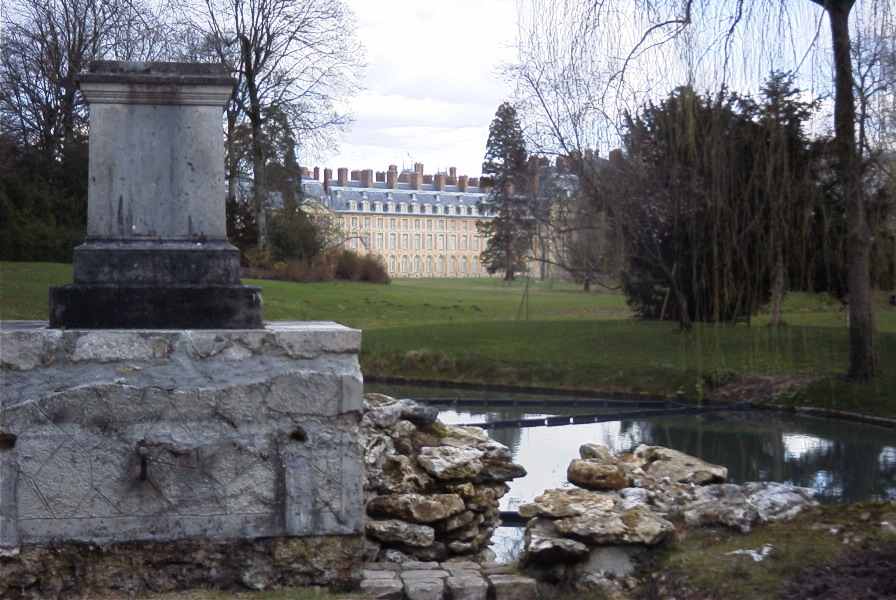
Here's another fountain similar to that above showing the use of rocks in the English Garden:
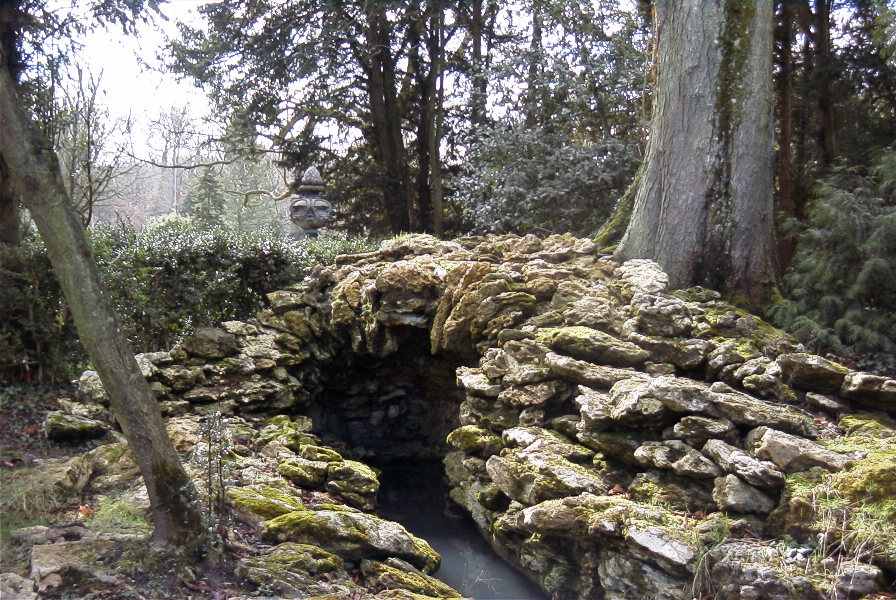
Like most wooded areas of France, this garden took some hits during the Christmas night Hurricane that ended the 2nd millenium. Here's the birthday boy posing with some of the other dead wood:
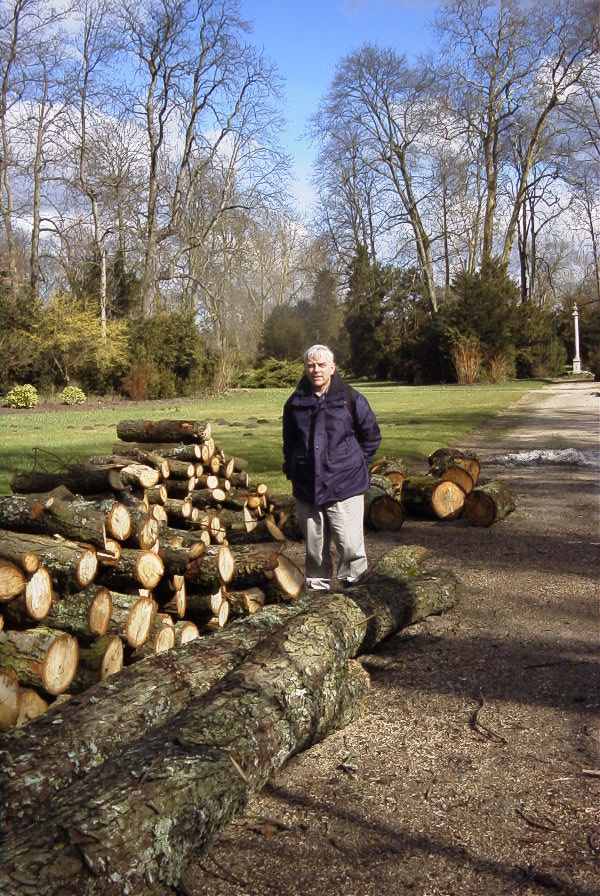
Next we wandered back to the Carp pond which if you were French would call the "Etang Des Carpes." Please join us by clicking here.
Where do you want to go today? Here's a few choices:
